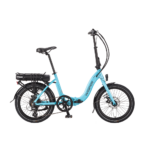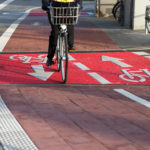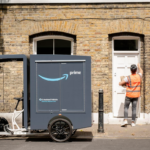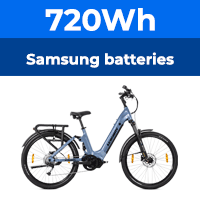ThanksMost hub motors have an automatic clutch so don't give any resistance above the speed they are helping.
A little extra help for an aging commuter...
- Thread starter QuestionsQuestions
- Start date
I think for now I'll settle for 328 rpm and see how that goes. I've had a good look around Topbikekit so will probably goes with them, they look a bit more professional that BMSBattery. Thanks400rpm is fast for a geared hub and usually these higher winds are found in Direct drive hubs.
If bent on needing 400rpm or more then you will need to over volt the 36v 328rpm 250w Q100c from Topbikekit.com. Limit the controller to < 17a and it might last or replace the two stage planet gears with metal ones.
Member Cwah has tried and burnt a couple out (I believe) and users on ES have also burnt them out by exceeding 20a.
Also watch out for the forum troll who will likely pipe up with his cut and paste as usual.
So when you are riding your pedelec and you set the throttle at a fairly slow speed, will that speed be maintained up a hill without having to increase the throttle? In other words does the controller try to maintain a constant speed or constant power with a given throttle setting? ThanksThat's true for motors with brushes, eBike motors nowadays are brushless and the speed of the motor is varied by adjusting the timing of pulses of current delivered to the several windings of the motor.
The controller acts as a current source, regulating the timing and current supplied to the motor. If the required current/torque is low then the voltage developed across the motor will also be low and it won't matter what the battery voltage is provided it's greater than that developed across the motor and isn't so high that it damages the controller.
Higher current controllers are, as their name implies, capable of providing higher currents and its important that the battery has a high enough voltage to provide that current, when required, into the motor load and is also capable of supplying that current.
I hope that answers your question.
Indeed 30mph would be illegal on a public road and quite rightly!Some controllers are programmable to allow usage & support for different wheel sizes. If you have such a controller, simply change setup to a wheel size that is smaller.
Disclaimer, I have never myself tried this, but theory suggests that it might work fine, though some controllers do not allow other wheel sizes.
But do not forget that exceeding the allowed max speed (if that is your intention), you might make yourself liable to possible prosecution, if the bike is not correctly registered for that new performance.
Scooting along at say 30MPH on a public road, makes you very obvious to the Police.
regards
Andy
legalities aside, there is no geared hub motors for this sort of sustained speed.
The load is proportional to speed cubed.
You would need 1500W+ and a direct drive motor. Also, post your question in the speed pedelecs section:
The load is proportional to speed cubed.
You would need 1500W+ and a direct drive motor. Also, post your question in the speed pedelecs section:
Umm, not convinced yet, but there's time! In order for speed to be controlled by pulses to the winding the controller would need to know the maximum rpm of the motor then distribute power across the throttle range, otherwise the maximum speed would defined by the controller regardless of the motor rpm. On a £15 controller that seems like a lot of complicated electronics and two way communication with the controller. Much easier to use the hall sensors to run the motor on maximum all the time and vary the voltage to change speed.That's true for motors with brushes, eBike motors nowadays are brushless and the speed of the motor is varied by adjusting the timing of pulses of current delivered to the several windings of the motor.
The controller acts as a current source, regulating the timing and current supplied to the motor. If the required current/torque is low then the voltage developed across the motor will also be low and it won't matter what the battery voltage is provided it's greater than that developed across the motor and isn't so high that it damages the controller.
Higher current controllers are, as their name implies, capable of providing higher currents and its important that the battery has a high enough voltage to provide that current, when required, into the motor load and is also capable of supplying that current.
I hope that answers your question.
I don't know of any model of controllers that work the way you describe.Umm, not convinced yet, but there's time! In order for speed to be controlled by pulses to the winding the controller would need to know the maximum rpm of the motor then distribute power across the throttle range, otherwise the maximum speed would defined by the controller regardless of the motor rpm. On a £15 controller that seems like a lot of complicated electronics and two way communication with the controller. Much easier to use the hall sensors to run the motor on maximum all the time and vary the voltage to change speed.
Controllers are usually programmed to deliver power on demand. Power influences speed. The speed limiter that you see on most bikes is controlled by the LCD which tells the controller to stop when the read speed exceeds the speed limit.
legalities aside, there is no geared hub motors for this sort of sustained speed.
The load is proportional to speed cubed.
You would need 1500W+ and a direct drive motor. Also, post your question in the speed pedelecs section:
HOME | Crystalyte
 www.crystalyte.com
www.crystalyte.com
# Motors TC30100 TC40100 and TC100 are available for custom-made for high speed.
72V 50A 100kph
Remark :
* Motor available up to 96V system.
* 48V system available for TC motor as well. The speed design base on 72V.
* Battery capacity suggest with 12ah or more. i.e. 72V 12ah or 72V 17ah ...etc.
* Suggest run TC motor with 50A ~ 85A controller or higher voltage system. i.e. 48V 50A , 72V 50A

D
Deleted member 25121
Guest
I've no experience using a throttle on an ebike, perhaps somebody else can answer your question. Sorry.So when you are riding your pedelec and you set the throttle at a fairly slow speed, will that speed be maintained up a hill without having to increase the throttle? In other words does the controller try to maintain a constant speed or constant power with a given throttle setting? Thanks
constant current.In other words does the controller try to maintain a constant speed or constant power with a given throttle setting? Thanks
if the gradient is too high, you lose speed, when your motor slows down, it loses yield. Your motor will soon stall.
i had a go on a 750w bafang mid drive last night pretty much turned up to the max fitted to a toys are us bike and when it kicks in you are going 25mph in seconds with a throttle and with effort from peddling could go as fast as my bike does easy problem is it takes 15m to stop with rim brakes and eats the batt using itI've no experience using a throttle on an ebike, perhaps somebody else can answer your question. Sorry.
Please address the problem from your own point of view, "How does a controller KNOW the wheel diameter 100% accurately?I wonder, do you believe everything you see using Google? I'm not saying that the contents of your Youtube links are incorrect, I can't be bothered to watch them, but you seem to suggest that if something shows up using Google it must be correct.
It is true that some controllers have it burnt into the firmware, nobody can change it. And some, like my own bike, you set up the wheel size in the firmware with a password on the LCD display.....From memory only, I can set mine to 20", 22", 24", 26" and 28".
But the controller cannot "check up" the actual wheel size, it has to "believe" what I tell it!
Anyone with some programming experience will understand that fully, but if you are not programming (notice that I do not say "computer") literate, you may not!
Happy New Year
Andy
most controllers do not need to know the wheel diameter nor RPM.Please address the problem from your own point of view, "How does a controller KNOW the wheel diameter 100% accurately?
It is true that some controllers have it burnt into the firmware, nobody can change it. And some, like my own bike, you set up the wheel size in the firmware with a password on the LCD display.....From memory only, I can set mine to 20", 22", 24", 26" and 28".
But the controller cannot "check up" the actual wheel size, it has to "believe" what I tell it!
Anyone with some programming experience will understand that fully, but if you are not programming (notice that I do not say "computer") literate, you may not!
Happy New Year
Andy
The speed limiter is set in the LCD and relies on a speedometer which is either located inside the motor's cover or mounted to the chainstays.
when a manufacturer wants to lock the speed limiter, he blocks the wheel diameter setting and the maximum speed value setting.
If he only wants a semi-rigid lock, he can set a password to block only the maximum speed setting.
These facilities are available on most LCDs to all OEMs.
D
Deleted member 25121
Guest
"How does a controller KNOW the wheel diameter 100% accurately?" - presumably you're referring to the rolling radius as measured between the centre of the axle and the closest contact point on the road. It's impossible for it to know that with 100% accuracy.Please address the problem from your own point of view, "How does a controller KNOW the wheel diameter 100% accurately?
It is true that some controllers have it burnt into the firmware, nobody can change it. And some, like my own bike, you set up the wheel size in the firmware with a password on the LCD display.....From memory only, I can set mine to 20", 22", 24", 26" and 28".
But the controller cannot "check up" the actual wheel size, it has to "believe" what I tell it!
I don't understand the point you're trying to make and I haven't alluded to "wheel diameter" in any of my postings on this thread.
You really should research your lies before you make your wild suggestions. As a professional electronics engineer I program in many computer languages, recently Python, C, C++ and some visual programming environments and in the past I'm programmed in Basic, Fortran, assembly language and machine code amongst other languages.Anyone with some programming experience will understand that fully, but if you are not programming (notice that I do not say "computer") literate, you may not!
And I can also design the computer hardware on which these programs run.
Now, what is your extensive programming expertise? But you won't answer the question will you, you'll simply ignore it and dream up some other wild theory or fake news!
Related Articles
-
 MTF Enterprises announces acquisition of EMU Electric Bikes
MTF Enterprises announces acquisition of EMU Electric Bikes- Started by: Pedelecs
-
 Wisper 806T folding bike wins Which? ‘Best Buy’
Wisper 806T folding bike wins Which? ‘Best Buy’- Started by: Pedelecs
-
 Sustrans calls for protected cycle lanes
Sustrans calls for protected cycle lanes- Started by: Pedelecs
-
 Amazon launch their first UK e-cargo micromobility hub
Amazon launch their first UK e-cargo micromobility hub- Started by: Pedelecs



